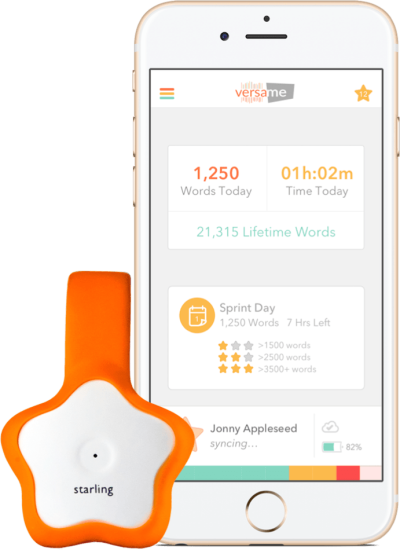Flashing lights turn green as the word count nears your predetermined target. If you feel your baby talk is lacking, the company provides some suggested activities to get the words flowing. You can preorder Starling for $169.
Vital Signs
No need to wear any gadgets here. Life Detection Technologies has developed a way to monitor your breathing and heart rate with hardly any contact, measuring how your pumping heart and breathing lungs change an electric field around your body.
The company's demonstration uses a thin aluminum sheet layered inside a chair to generate a weak electric field. Take a seat, and when your heart and lungs pump and breathe, changing their shapes, an electrical property called permittivity alters the electrical field. You sit in the chair and a coin-sized sensor measures those changes, processing the signal. The sensor sends the data to a smartphone app or other external device, which displays your breathing and heart rates.
One application of the technology is putting it in the seats of vehicles to make sure drivers don't get drowsy. But the field generator doesn't need to be embedded in a chair. For example, instead of aluminum sheets, the company has designed an electrical- conducting fabric made of silver and nylon. Eric Howie, the company's founder, envisions sewing the fabric and sensor together into a crib's mattress pad, to serve as a a baby monitor.
A Wearable Personal Trainer
These thin, tight-fitting outfits are designed to help train athletes. The washable shirts and pants are fitted with 10 sensors that track your motion. The data feeds back into your smartphone, which you can use to ensure you're using proper form and speed during exercise. Enflux, the company that makes the suits, is selling them for weightlifting and running. But Enflux envisions athletes using them in all kinds of sports. Maybe, says the company's Mickey Ferri, basketball fans can someday use it to mimic Steph Curry's shooting form. Prices start at $249.

Control Your Mind
Put on this headpiece and give it a piece of your mind. The MindWave Mobile Headset, made by NeuroSky, is your personal electroencephalogram (EEG) machine, tracking your brainwaves so you can watch them in real time and train to adjust your mental state. That can help you improve business interactions or activities like golfing, says Masamine Someha, a hardware engineering manager for NeuroSky. The company says the technology has been used to help U.S. Olympic archers. The headset sells for $99.
The Smart Light
This lamp mimics the rising and setting sun by changing its color and angle of light based on the time of day. Brian Hoskins, CEO and founder of Ario, says the idea is to support the body's circadian rhythm, contributing to a good night's sleep and overall health. The light, which you can preorder for $299, is hooked up to Wi-Fi, so it knows your location and what season it is. Based on how you use it—when you turn it off to go to bed at night, for example—it learns and adjusts its lighting and dimming pattern to fit your schedule. You can control the device with your phone, tablet, compute or buttons on the lamp itself.
 You clip the star-shaped device, which is enclosed in a soft, drool-proof casing, on or near your child. Using proprietary algorithms, Starling tracks the number of words spoken to and by the child. Babbling sounds count as words, and any language is fine.
You clip the star-shaped device, which is enclosed in a soft, drool-proof casing, on or near your child. Using proprietary algorithms, Starling tracks the number of words spoken to and by the child. Babbling sounds count as words, and any language is fine.

